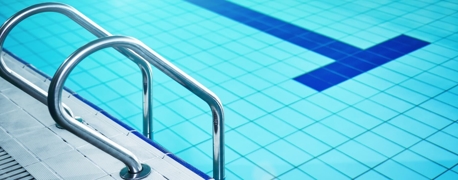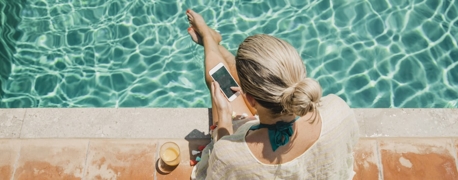How to Know If Your Child Can Swim Safely at Summer Camp

For many families, summer camp is a rite of passage—days on the water, new friendships, and other experiences kids will remember for years. But when water activities are part of the program, parents are often caught between two extremes: sending their kids off with fingers crossed, or deciding it's safer to keep them home.
There's a better way. Parents can take a third path—asking the right questions, checking key safety measures, and preparing their kids with the skills they need to stay safe in the water.
With more than 20,000 summer camps operating in the U.S. as of 2024, there's no single standard for water safety. Some camps are highly regulated and accredited. Others are licensed but operate under minimal oversight. By knowing what to look for—and what to ask—you can feel confident about sending your child to camp while reducing the risk of preventable accidents.
Why Swim Safety at Summer Camp Matters
Camp is good for kids. According to the Washington Post, avoiding summer camp altogether can have hidden costs: children's health and academic outcomes often decline over summer break, while a few weeks at camp can reverse those losses and improve emotional well-being, social skills, and even academic performance.
Still, water activities remain one of the highest-risk parts of the camp experience. While the Washington Post notes that the most common camp injuries are nonfatal—fractures, illness, and cuts—drowning is a uniquely severe hazard. The Centers for Disease Control and Prevention (CDC) reports that from 2020—2022, more than 4,500 people drowned each year in the U.S. Drowning is the leading cause of death for children ages 1—4, and the second leading cause for children through age 15, after car crashes, according to CDC data reported by WJLA. About 40% of drowning deaths among children ages 5–14 happen in natural water like lakes and rivers—which are common camp settings.
The safety gap between camps is wide. Only about 4,000 camps—roughly 15% of the total—are accredited by the American Camp Association. While most camps meet their state's licensing requirements, ACA accreditation involves hundreds of extra safety, health, and risk management standards that far exceed state minimums.
Step 1: Assess Your Child's Current Swim Skills
Before evaluating a camp's safety, start by evaluating your child's swimming ability. The Goldfish Swim School identifies core water safety skills every child should master before swimming in lakes, pools, or other open water:
- Holding their breath underwater.
- Entering and exiting the water safely.
- Floating on their back to rest.
- Swimming from one end of the pool to the other.
- Swimming to shallow water if they get in over their head.
- Treading water for an extended time.
- Recovering after unexpectedly falling into deep water.
The University of Alabama at Birmingham offers a simple checklist to know if your child is ready to swim without a flotation device:
- Can they float on their back for 10—20 seconds without help?
- Are they comfortable swimming underwater without goggles?
- Can they coordinate arm and leg movements to move through water?
- Can they move between floating horizontally and standing vertically in the water?
- Can they enter and exit the pool without help?
Even strong swimmers benefit from regular practice. You can schedule lessons, use your local pool to review these skills, and download the American Red Cross "SWIM" app (text SWIM to 90999) for at-home assessments and safety tips.
Step 2: Choose the Right Camp
State governments inspect and certify camps according to their own standards, but these vary widely. ACA accreditation provides a national benchmark, requiring compliance with over 250 health and safety standards, including those for aquatic activities.
When evaluating a camp, here are key questions to ask:
- Staff qualifications: Are counselors and lifeguards certified in CPR, first aid, and aquatic safety? Are certifications current?
- Supervision ratios: How many swimmers are assigned per lifeguard? How many staff supervise each group of campers during swim time?
- Lifejacket policy: Are lifejackets mandatory for younger or less experienced swimmers? Who enforces the rule?
- Facility safety: Is the swimming pool fenced and locked when not in use? Are lakes and waterfronts monitored even when not active?
- Activity-specific safety: For paddleboarding, canoeing, or boating, what protective equipment is provided, and is it properly fitted?
- Regulatory compliance: Does the camp follow state rules for public pools and water play areas? If no state rule applies, what safety guidelines do they follow?
Emergency readiness is just as important as prevention. Ask whether the camp has:
- 24/7 medical staff on site.
- A written emergency response plan.
- A partnership with local EMS or a hospital.
- Transportation for emergencies—and how far the nearest hospital is.
Step 3: Ask the Right Water Safety Questions
Even among ACA-accredited camps, policies vary. Parents should ask:
- Swim testing: When is it done, and how are kids assigned to activity levels? Will your child be supervised near water regardless of passing a test?
- Supervision after passing: Are all campers, even strong swimmers, monitored by trained lifeguards at all times?
- Activity scope: What aquatic activities are planned—swimming, paddleboarding, sailing, kayaking? What unique safety measures apply to each?
- Medical preparedness: If your child has asthma, a severe allergy, or another medical need, how is the staff trained and equipped to respond?
The more specific the camp's answers, the more confidence you can typically have in their program.
Step 4: Prepare Your Child
Even the safest camp can't replace personal readiness. Help your child learn how to ensure their own safety:
- Swim lessons: If your child's skills aren't strong, enroll them in a swim class before camp begins.
- Lifejacket awareness: Teach them why these rules matter and that lifejackets aren't just for "bad" swimmers.
- Recognizing distress: Explain that someone drowning might not look like they're struggling—quiet or motionless swimmers may need help. Encourage them to get an adult or lifeguard immediately.
- Health prep: Update immunizations and talk to your child about outdoor hazards like ticks or mosquito bites. Make sure camp staff have a full health history and emergency contact info.
The Payoff: Safe, Joyful Summers
The goal isn't to wrap kids in bubble wrap or send them off with blind faith—it's to find the middle ground. By checking a camp's credentials, asking about supervision and emergency plans, and making sure your child is water-ready, you're stacking the odds in favor of a safe, enriching summer.
Parents deserve the tools to make informed decisions before a tragedy happens. With preparation, the right questions, and the right camp, summer can be everything it should be: safe, fun, and unforgettable—for the best reasons.


